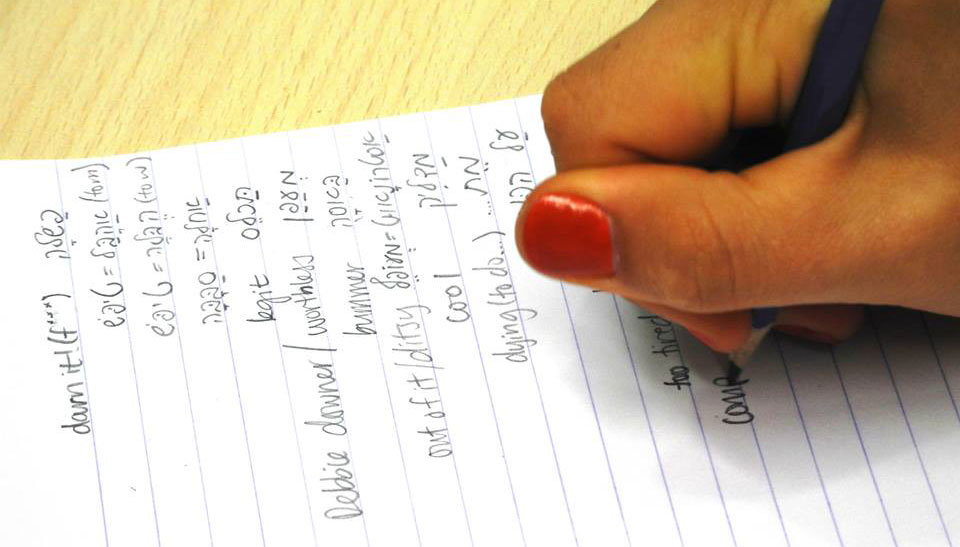Ulpan Shortage Leaves Thousands of Olim Unable to Study Hebrew
Reposted from haaretz.com November 10, 2022
Some 500 teachers teach Hebrew at ulpanim today, and the Education Ministry estimates that in order to close the gaps and shorten waiting times, some 100 additional teachers need to be recruited
Dimitry Tolkachev came to Israel from Moscow about a month and a half ago. He had been thinking about aliyah for a few years, but the widespread army call-up and the fact that he is an LGBTQ activist in Russia expedited his decision to leave the city he was born in. Luckily for Tolkachev, he has a job with an international hi-tech company with offices in Israel as well, but one issue still remains unresolved: To this day he has not been able to find a place in an ulpan, a Hebrew-language immersion class. He is beginning to adjust to the life in Israel, and tries to learn a little Hebrew with an app during bus rides to work. He knows that it will take more than that to master the language, but so far it’s unclear when a place in an ulpan will be available for him.
Tolkachev is one of 4,570 new immigrants from Ukraine and Russia for whom no place has been found at any of the 85 ulpanim operated by the state. In recent years the ulpanim have taken in some 15,000 adult olim per year (children are eligible for extra Hebrew lessons within the schools.) Now, following the war in Ukraine, the Education Ministry expects that the number of olim requiring ulpan studies to reach 25,000 by the end of 2022.
Some olim have been waiting longer than Tolkachev, as much as half a year. “Our city has taken in almost 1,000 olim since the war began, but only two ulpan classes were opened, providing a solution for only 50,” says Lena, an olim coordinator at one municipality. Some olim had to make their way to ulpanim in other cities, and others have simply not begun learning Hebrew at all.
The eligibility period for an immigration absorption package is six months, and this is the best window of opportunity for ulpan studies – five months of intensive, everyday studies. “When olim have to wait too long for the ulpan, the concern is that they will eventually drop out because they have to start working,” says a source familiar with the details, who added that as a result, “the olim have to start working at jobs that don’t fit their skills, because they don’t speak the language yet.” He fears a repeat of the days of the great aliyah from the former Soviet Union, when doctors and engineers worked in cleaning and security. Until places are found for all in the classrooms, the Education Ministry prioritizes olim who are awaiting placement in the employment market. Left behind are the elderly olim, whose waiting times are longest.
Some 500 teachers teach Hebrew at ulpanim today, and the Education Ministry estimates that in order to close the gaps and shorten waiting times, some 100 additional teachers need to be recruited. Although new positions are opened immediately in accordance of the number of olim needing classrooms, the ministry is struggling to recruit teachers to fill those positions.
The long wait for ulpanim is a result of the recent aliyah wave, but difficulties in recruiting ulpan teachers are not new. “In previous aliyah waves they knew how to open classrooms and recruit teachers quickly,” says Lena.
The ulpan teachers have been fighting over their employment conditions for over a decade, since they were exempted from the “New Horizon” (“Ofek Hadash”) agreement of 2008, which improved conditions for teachers unionized under the Teachers Union. The Education Ministry sought to completely eliminate the division of Hebrew studies for adults, and divert the funds to elementary schools. Following a struggle a complete shutdown was averted, but a source familiar with the details says that an attitude of “be thankful we’re keeping you around at all” remains.
Left out of the agreement
In 2019, ahead of the expiration of the collective bargaining agreement between teachers and the state, the ulpan teachers sought to renegotiate their own pay deals, but say that they were hoodwinked into not making waves. In the end, they were once again left out of the agreement that raised the pay of school teachers to a starting level of 9,000 shekels per month, while full-time ulpan teachers’ salaries remain 6,000 shekels a month.
Meanwhile, the Education Ministry is struggling to fill the new positions opened for ulpan teachers. The teaching shortage is evident in all levels of teaching and subjects, but the ulpanim have a high potential pool of recruits – all those qualified to teach who have left the education system due to the overcrowded classrooms and discipline problems.
But despite the fact that the number of interested applicants is high, once they hear the pay, many pass. To bridge the gaps, the ulpanim cut back on classroom hours in order to shorten waiting times for olim who haven’t even begun their studies. “Instead of five times a week, some olim now come only for four days of study,” says Suzy Attar, deputy principal at Ulpan Gordon in Tel Aviv and a leader of the ulpan teachers struggle. There is no doubting the important role of the ulpanim: a survey by the Education Ministry’s assessment and research authority in 2018, in which some 900 ulpan alumni were interviewed, showed very high levels of satisfaction with the studies, and 95 percent of graduates said that they would recommend ulpan studies. Meanwhile, the ulpan teachers continue to demonstrate before the offices of the Teachers Union, and from time to time go on “Italian strike,” in which one ulpan at a time remains closed due to some mysterious outbreak among its staff. In the meantime, those suffering are the olim.

